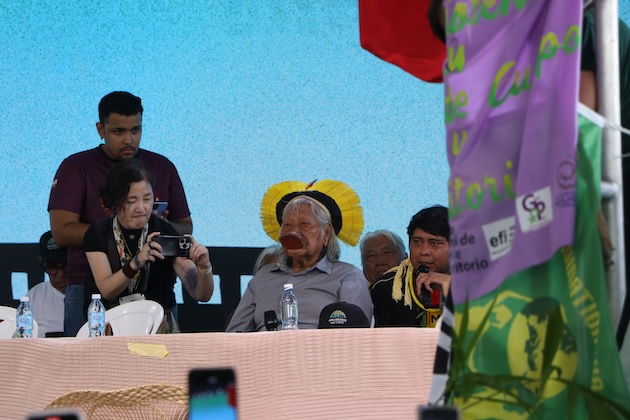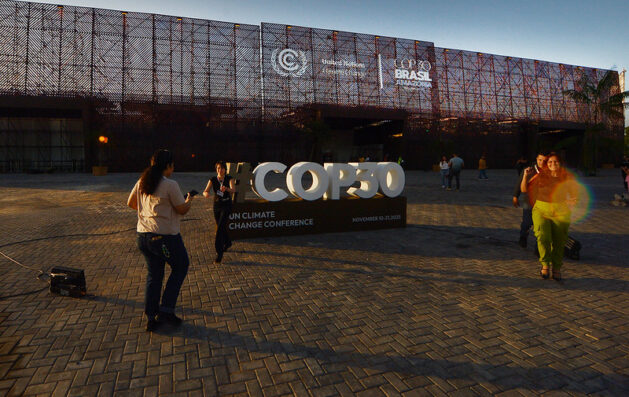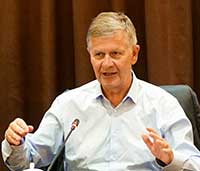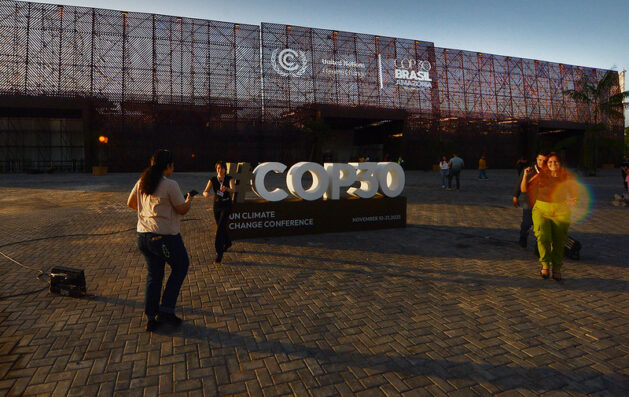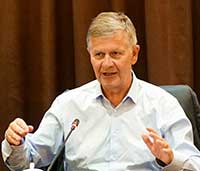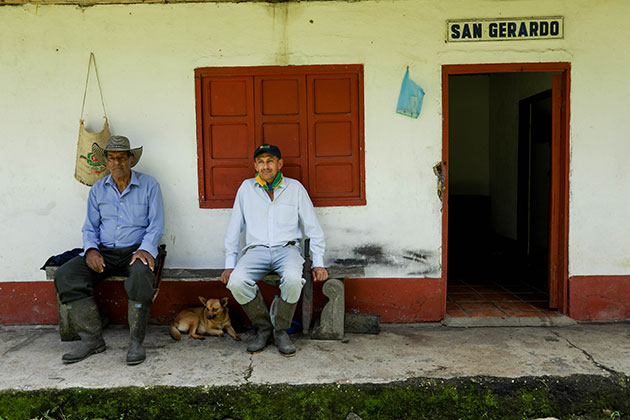
Climate Action, Climate Change, Climate Change Finance, Climate Change Justice, Conferences, COP30, Editors’ Choice, Environment, Featured, Global, Headlines, Human Rights, Humanitarian Emergencies, Latin America & the Caribbean, Sustainable Development Goals, TerraViva United Nations

The COP30 Presidency is urging all “negotiators to join in a true mutirão—a collective mobilization of minds, hearts, and hands,” saying this approach helps “accelerate the pace, bridge divides, and focus not on what separates us, but on what unites us in purpose and humanity.”

Negotiations take place throughout the day and now late into the night. Credit: UN Climate Change/Kiara Worth
– At a Conference of the Parties, where science intersects with politics, reaching agreements is often a tricky business. What is inside the last-minute negotiations as the COP presidency tries to get the parties to agreement at the final plenary?
COP negotiators are diplomats and government officials who meet at the Conference of the Parties to negotiate and agree on how to address climate change. They are also often joined by COP delegates’ representatives from civil society, social movements and businesses.
As representatives of their respective countries that are parties to the UNFCCC treaty, they discuss, debate, and haggle over their preferred wording of texts and legally binding agreements regarding how to address climate change during closed-door sessions.
Windowless Closed-Door Meetings
These closed-door meetings are often also windowless, and negotiators often lose track of time as they work through extensive documentation and diverse national positions to form a final agreement towards the end of the COP summit schedule.
COP 30, Belém, is posting a daily photographic glimpse into the collective effort to build trust, dialogue, and cooperation to accelerate meaningful climate action and deliver its benefits to all. Many hope this message will permeate inside these rooms.
The UN climate summit has now entered its final stages. The Brazilian COP30 Presidency has extended working hours, scheduling late-night meetings for the last two nights—Monday and Tuesday, Nov 17 and 18, 2025.
Tonight might not be any different, as the COP30 Presidency pushes for a rapid compromise and conclusion of a significant part of negotiations to pave the way for a “plenary to gavel the Belém political package.”
After all, the COP is where the science of the Paris Agreement intersects with politics.
The Elusive True Mutirão
The COP30 Presidency is urging all “negotiators to join in a true mutirão—a collective mobilization of minds, hearts, and hands,” saying this approach helps “accelerate the pace, bridge divides, and focus not on what separates us, but on what unites us in purpose and humanity.”
But this is the point in the negotiations, even in a ‘COP of truth,’ as COP30 was staged to be, where the real claws come out amid accusations of protectionism, trade tensions and geopolitical dynamics as the worlds of business, politics and human survival intersect.
Even as UN officials urge parties to accelerate the pace, warning that “tactical delays and procedural obstructions are no longer tenable” and that deferring challenging issues to overtime results in collective loss, reconciling deep differences among nations is proving easier said than done even within the Global Mutirão—a concept championed by the COP30 presidency.
It calls for worldwide collective action on climate change, inspired by the Brazilian and Indigenous Tupi-Guarani tradition of mutirão, which means “collective effort.” The bone of contention at this juncture is what some parties see as weak climate commitments, insufficient financial pledges from the global North to South, and trade measures.
Protectionism
Trade measures are turning contentious and deeply debatable in Belém because of a difference of perspective—developing countries view them as protectionism, while some developed countries see them as necessary to level the playing field for their climate policies.
For developing countries, protectionism is a deliberate strategy by more developed countries to limit imports to protect their industries from foreign competition and therefore give them an undue advantage. Developing nations say this is unfair because it restricts their ability to export and gain access to larger markets.
The core of the debate at COP30 is the inclusion of issues like the EU’s Carbon Border Adjustment Mechanism (CBAM) in climate talks. For some countries, CBAM is a direct part of climate action and belongs at COP. Others say it is an agenda best discussed at the World Trade Organization.
The EU’s Carbon Border Adjustment Mechanism (CBAM) is a tool to put a price on the carbon emissions of certain imported goods, ensuring that the carbon price for imports is equivalent to that for domestic EU production. Its main goals are to prevent “carbon leakage,” or companies moving production to countries with weaker climate policies, encourage cleaner production globally, and protect EU businesses by creating a level playing field.
How to Go About a Just Transition?
The business of climate change is not the only thing that is complex and divisive. There are also small island states calling for rapid emissions cuts vis-à-vis the positions of major emerging economies. G77 and China are an intergovernmental coalition of 134 developing countries that work together to promote their collective economic and developmental interests within the United Nations framework.
China is not an official member and does not pay dues. It has been a partner since 1976, providing significant financial support and political backing to the G77. Developed countries such as the UK, Norway, Japan, and Australia are pushing back against their proposed global just transition, thereby prolonging the negotiations.
Developed nations are refusing the global just transition proposal by the G77 and China because they see it as a new and unnecessary mechanism and a duplication of existing structures. They refuse to accept the financial and technical support these countries are asking for to facilitate this transition. Simply put, they want a less strict framework that allows their own interpretations of existing institutions and funding structures for the just transition.
Where is the Adaptation Financing?
Finance for adaptation is similarly a sticking point. Developed nations are dragging their feet around committing sufficient funds to support developing nations to adapt to climate impacts and transition their energy systems. It is still not clear whether financial commitments will be embedded inside adaptation goals or remain as they are—separate.
Lobbyists and the Fossil Fuel Debate
Amidst growing tensions, it is also not clear whether this COP will phase out or phase down fossil fuels in the final agreement. The large delegation of fossil fuel lobbyists suggests it is too early to call. On the Global Goal on Adaptation (GGA), those who want indicators for measuring adaptation progress directly linked to financial commitments will not budge. The settlement of this matter could potentially take two years (or more).
Disagreements are ongoing about the mandate of the Mitigation Work Program, which seeks to raise ambitions on national emissions reduction. In general, insiders to the negotiations are saying general negotiation tactics are at play.
Some participants are employing delay tactics to buy time and ultimately weasel out of certain commitments; a lack of trust continues, as it has in previous COPs, along with generally slow progress on building consensus around various contentious issues.
This feature is published with the support of Open Society Foundations.
IPS UN Bureau Report


